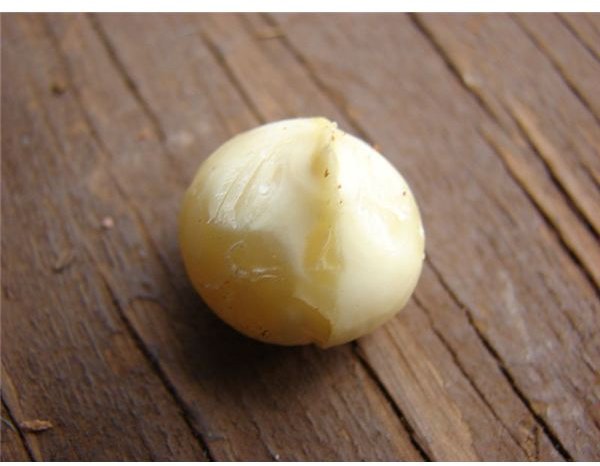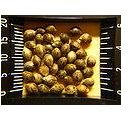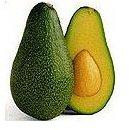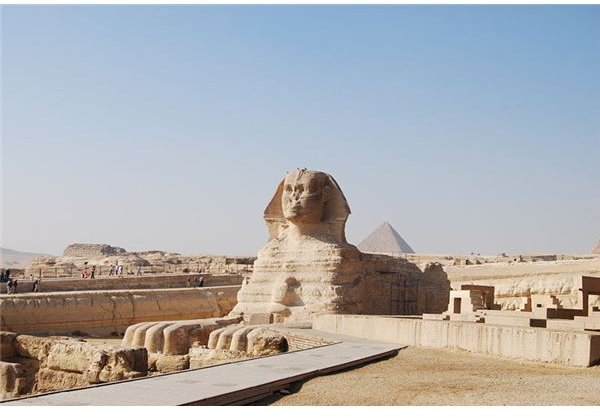All About Natural Oils that Provide Natural Sun Protection
A Brief History about Sunscreen Lotions
If the sun’s natural rays are that harmful, what did people of long ago use as sun protection? It is said that the ancient Egyptians with their vast sun-drenched desert land had concocted their own skin protection. Although Egyptian queens and princesses could afford to stay indoors most of the time, it was necessary to use oils that provided natural sun protection, in order to keep their complexions pale and luminous. This was a must, because under the Egyptian’s social class system, one could easily tell if the person belonged to the lowest level, if his or her skin was sunburned.
It was only in the 1920s that the idea of becoming sun tanned became fashionable, when fashion designer Coco Channel started sporting a tan. Years later, it also gave birth to the business of manufacturing products that could provide adequate skin protection against sunburn, until sunscreens became a big industry. Chemists had begun experimenting with different substances and synthetic formulations to meet the demands for the most effective sunscreen protection. Experiments also involved methods of measuring the extent of ultra violet radiation (UVR) protection that a certain product could provide. This measure is what we know of today as SPF or Sun Protection Factor.

In recent years, however, the long-term effects of using harsh chemicals on human skin surfaced as one of the causes of skin cancer called melanoma. However, it was also established that the lack of sufficient UVR protection in most sunscreen products was also causing skin cancer. The American Melanoma Foundation states that an SPF of 15 can absorb as much as 93% of the ultraviolet radiation, while an SPF of 34 can absorb up to 97%. Please note that SPF of 15 or higher is the recommended SPF in sunscreens especially for children. Today, efforts to come up with a safer form of protection from UVR leads researchers back to ancient papyri and writings on the tomb walls. Translations are being made in order to unearth important facts on how the ancient Egyptians managed to protect their skin from the harmful rays of the sun.
Findings include information about oils that provide natural sun protection. Hence, let us now take a closer look at these natural oils and find out what makes them effective as natural protection agents against UVR.
Oils that Provide Natural Sun Protection against UVR
Based on research, it appears that there are many sources of natural oil ingredients that could provide adequate protection against UVR. In fact, some naturalists believe that it is part of nature’s system or part of the concept of sustainability in our ecology. The sun provides the energy that plants need while the plants in return will give off oil, food, fuel and other important materials which living organisms could use. Hence, people of long ago had no other resources for sun protection other than these natural oils.

Macadamia Oil – Macadamia is known as the” king of nuts” and its oil is known to have almost the same properties as sebum. Sebum is the oil produced by our sebaceous glands to protect the skin from dryness and in a way makes skin and hair waterproof. Notice that water does not readily pass through the pores of our skin even as we get wet. It has been tested as having high-absorption rate when applied externally to provide protection against sunburn. As a sunscreen ingredient it has an SPF rating of 6.

Hemp Seed Oil- The oil extracted from hemp seed is said to closely resemble the body’s natural lipids. Lipids refer to molecular compounds considered important for cell growth due to their large carbon and hydrogen content. Lipids do not easily mix with water because their properties are more related to fat substances, although not all lipids are fats. As sunscreen protection, it is easily absorbed by the skin to provide the essential fatty and essential amino acids as well as other nutrients. All these are needed for proper keratin formation in the skin, teeth, nails and hair as a major protein component. Due to this, hemp seed oil has an SPF rating of 6.
Please proceed to the next page for a continuation of the oils that provide natural sun protection.
More about Oils that Help Gain Sun Protection

Jojoba Oil – Jojoba oil is more correctly described as liquid wax. Like Macadamia oil, the properties of jojoba oil are akin to that of human sebum or the skin’s natural oil. As a sunscreen ingredient, jojoba oil not only provides natural moisturizers for the skin but also provides healing and anti-inflammatory elements through its natural substance called myristic acid_. Myristic_ acid is a form of fatty acid naturally occurring in plant oils. This oil has an SPF rating of 4.
Sesame Seed Oil- Sesame seed oil is said to be composed of 20% protein and 50% lipids which gives the gamma tocopherol (Vitamin E) content. Tocopherol provides stable anti-oxidative mechanisms which include eliminating free radicals. UVR rays are said to be capable of activating the release of free radicals in skin cells. The characteristic of being stable means they do not easily breakdown under the sun’s UVR or when kept in storage. As a sunscreen ingredient, it has an SPF rating of 4.
Grapeseed Oil- This oil is said to be rich in oligometric proanthrocyanidins or OPC. These are like the sesame seed oil components which hunt down free radicals that cause aging, with the purpose of eliminating them from the body system. Studies show that the OPC in grapeseed is twenty times more effective than vitamin C in eradicating free radicals in its function as an antioxidant. The antioxidating capabilities also promote the self-repair process of cells, which is important when the skin becomes affected by the sun’s UVR rays. The SPF rating for this oil as a sunscreen ingredient is 4.

Avocado Oil – This fruit is highly regarded by the Aztecs of Mexico for its high nutritional content. Avocado oil is rich in vitamins A, B, D and E , fatty acids and lecithin. Avocado oil has quick-acting capacity to be absorbed by the skin tissue and provides the skin with emollients that can hydrate, nourish and regenerate the epidermis or the outer skin layer. Avocado oil has an SPF rating of 4 as a sunscreen ingredient.
Raspberry Seed Oil – This is considered a superior source of moisturizer and contains skin emollients in the form of alpha and gamma tocopherols (Vitamin E), high concentrations of Vitamin A, antioxidants and fatty acids. Due to these traits, raspberry seed oil is given an SPF rating of 4 as a sunscreen ingredient.

Coconut Oil – This oil is abundant in tropical countries and is also known as coconut butter when it assumes solid form at room temperature. Oil extract is called virgin coconut oil if it was derived from the dried meat of the coconut fruit. Coconut oil is clear but rich in fatty acids and moisturizing elements that give it anti-bacterial, anti-fungal and anti-microbial properties. It is ideal as a sunscreen agent because of its highly stable characteristics under any condition and capability for an indefinite shelf-life during storage. However, as oil that provides natural sun protection, it only garnered an SPF rating of 2.
There are other natural ingredients available that possess similar healing and protective properties like the natural oils described above. In fact, one natural ingredient which is also ideal as a sunscreen ingredient is Shea Butter, which has an SPF rating of 6. This natural ingredient comes from the Karite or Mangifolia tree found abundant in the savannahs of Africa. Considering this continent’s high levels of exposure to the sun, Shea Butter is widely and effectively used in lieu of other oils that provide natural sun protection.
Reference Materials:
- https://www.academicjournals.org/ajb/PDF/Pdf2005/Jan/Athar%20and%20Nasir.pdf
- https://www.natural-holistic-skin-care.com/oilsandbutters.html
- https://www.holistic.com/holistic/learning.nsf/title/How+and+why+to+protect+your+skin+with+Natural+sunscreens
- https://www.ijpr-online.com/docs/20082/IJPR494.pdf
- https://www.aseanfood.info/Articles/11019302.pdf
Images courtesy of Wikimedia Commons
This post is part of the series: All About Sunscreen Safety Checks
Using sunscreen is very important but you need to do some safety checks to make sure you’re using the right type of safe sunscreen. Checkout this series and learn about sunscreen safety checks and the natural oils you can use as alternatives in sunscreen protection.
